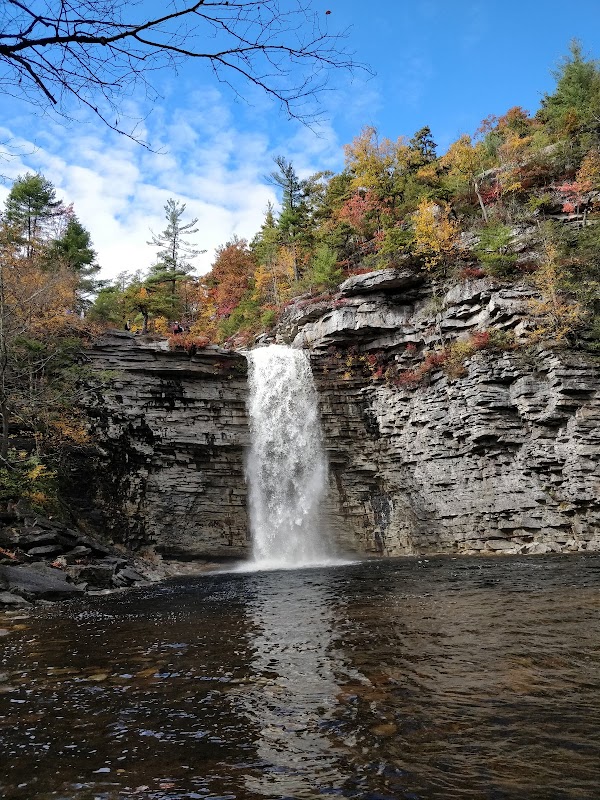
Jamaica Bay Bird Watch Marathon: A Practical Guide to Urban Avian Adventure
Experience an urban birding adventure at Jamaica Bay Bird Watch Marathon in South Ozone Park, NY. This accessible 6-mile route combines flat trails with rich birdlife and diverse habitats, perfect for both casual hikers and seasoned birders seeking a practical and immersive outdoor escape.
Start Early for Best Bird Activity
Birds are most active in the cooler morning hours. Arrive before 8 a.m. to maximize sightings and avoid midday crowds and heat.
Bring Your Own Water
Water stations are limited or nonexistent, so carry at least 1 liter per person, especially in warmer seasons to stay hydrated.
Use Waterproof Footwear
Trails wind through marshy areas that can be damp or muddy; waterproof shoes will keep your feet dry and comfortable.
Stay on Marked Trails
Preserve fragile habitats by following designated paths. This protects local wildlife and ensures your safety amid shifting marsh edges.
Jamaica Bay Bird Watch Marathon: A Practical Guide to Urban Avian Adventure
Jamaica Bay Bird Watch Marathon in South Ozone Park, New York, offers a unique blend of urban wilderness and avian excitement. This event spans approximately 6 miles of mostly flat terrain, weaving through varied habitats including salt marshes, woodlands, and serene water edges. The ground underfoot is a mix of packed dirt trails and occasional boardwalks, with negligible elevation changes, making it accessible for a wide range of hikers and bird watchers.
As you step onto the route, the air carries the brisk calls of gulls and herons—nature's own heralds daring you to keep pace. The marshes reach out with slender reeds, brushing against your legs like silent sentinels, while the bay lazily laps nearby, pushing you forward with every gentle wave. The woodlands cloak you in dappled shade, the rough texture of tree bark grounding the experience as you scan the treetops for orioles and warblers.
Timing your visit early in the morning maximizes your chances to catch migratory species active before midday heat dulls their activity. Hydrate well; water stations are limited if present, so a personal supply is essential, especially during summer months. Footwear should be sturdy yet flexible—a pair of waterproof hiking shoes will handle damp patches and occasional muddy stretches without overburdening your feet.
Though the trail is not physically demanding, its challenge lies in the patience and alertness required to spot the birds that call Jamaica Bay home. Raptors soar overhead, their shadows fleeting reminders of the wild forces behind the urban veil. This is a hike that rewards focus, rewarding the observant with glimpses of elusive species that thrive fiercely within an often-overlooked ecosystem.
Practical route information: the trail is well-marked with informative signage, GPS coverage is reliable throughout, and rest areas are spaced roughly every 1.5 miles. Parking is available near the Jamaica Bay Wildlife Refuge entrance, with public transit options from JFK Airport and nearby subway stations improving accessibility. Remember, the area is protected—stay on designated paths to preserve delicate habitats and respect both wildlife and fellow walkers.
In planning your marathon bird watch, bring binoculars tuned for clarity and a field guide to eastern birds to identify your quarry on the fly. Whether you're a seasoned birder or a curious newcomer, Jamaica Bay offers an engaging, grounded encounter with nature’s tenacity right on the edge of New York City.
Nearby Trips
All Adventures
Boat Charters
Water Activities
Adventures near South Ozone Park, New York
Discover the unique and memorable adventures that make South Ozone Park, New York special.
Frequently Asked Questions
What species of birds can I expect to see during the Jamaica Bay Bird Watch Marathon?
Expect a variety including great blue herons, ospreys, red-winged blackbirds, and during migration seasons, rarer warblers and hawks. The area is also a haven for waterfowl like mallards and Canada geese.
Is the trail wheelchair accessible?
Parts of the trail around Jamaica Bay Wildlife Refuge have boardwalks that are wheelchair accessible, but some dirt and marsh paths may be uneven. It’s best to check specific route sections before planning.
Are dogs allowed on the bird watch marathon route?
Dogs are generally not permitted in Jamaica Bay Wildlife Refuge to protect the wildlife. Check local regulations to avoid fines and disturbances.
How crowded does the event get and when is the best time to avoid crowds?
The marathon attracts many participants, especially on weekends. Weekday early mornings offer quieter conditions and better bird activity.
Are there restroom facilities available during the hike?
Restrooms are located near the refuge entrance but not along the trail itself. Plan accordingly to use facilities before or after your hike.
What are the environmental protections in place to preserve Jamaica Bay’s habitat?
Jamaica Bay is part of the Gateway National Recreation Area with strict regulations to protect water quality, bird populations, and wetlands. Visitors must stay on trails and avoid disturbing nesting areas.
Recommended Gear
Binoculars
Essential for spotting and identifying birds at a distance among dense vegetation and open marsh.
Waterproof Hiking Shoes
Crucial for navigating damp, marshy sections while keeping feet dry and comfortable.
Light Daypack
Useful for carrying water, snacks, a field guide, and extra layers without weighing you down.
Insect Repellent
Advantageous during warmer months to prevent bites from mosquitoes and other insects.
Local Insights
Hidden Gems
- "An observation deck near West Pond offers a quieter spot with panoramic views of waterfowl activity often missed by casual walkers."
- "Salt marsh channels provide unique reflections and insect life that attract specific bird species uncommon on main pathways."
Wildlife
- "Watch for eastern painted turtles basking on logs during warmer months, and keep an eye out for the occasional diamondback terrapin near brackish waters."
- "Ospreys are particularly active during summer, using nearby pylons for nesting."
History
"Jamaica Bay was once a hub for fishing and agriculture before becoming a protected refuge in the 1970s, preserving an essential migratory bird corridor within an expanding urban landscape."
